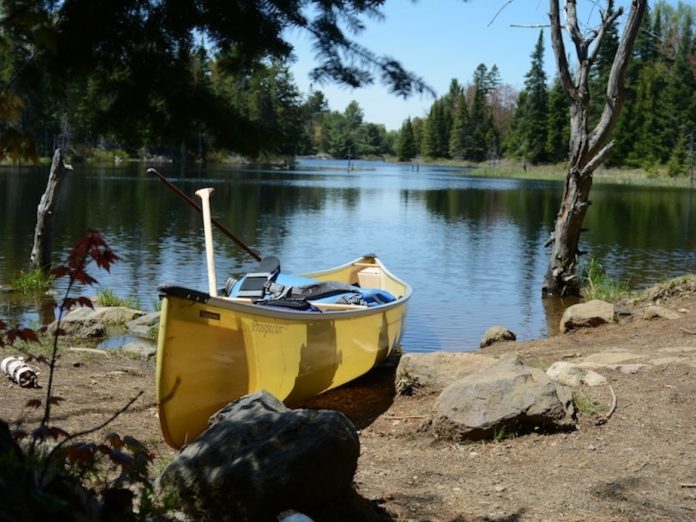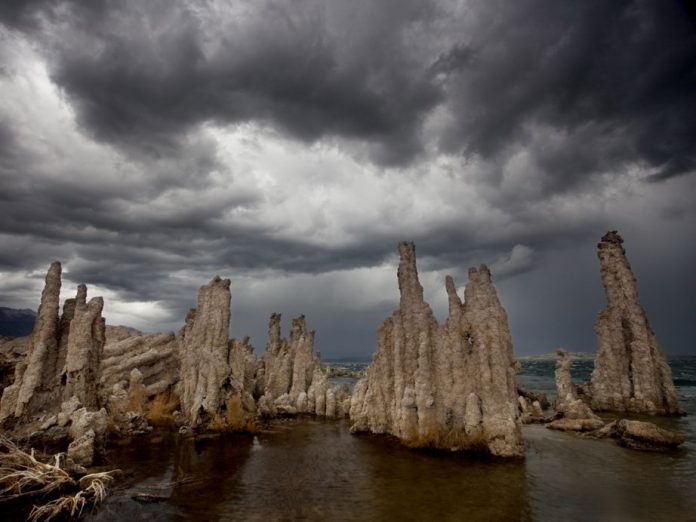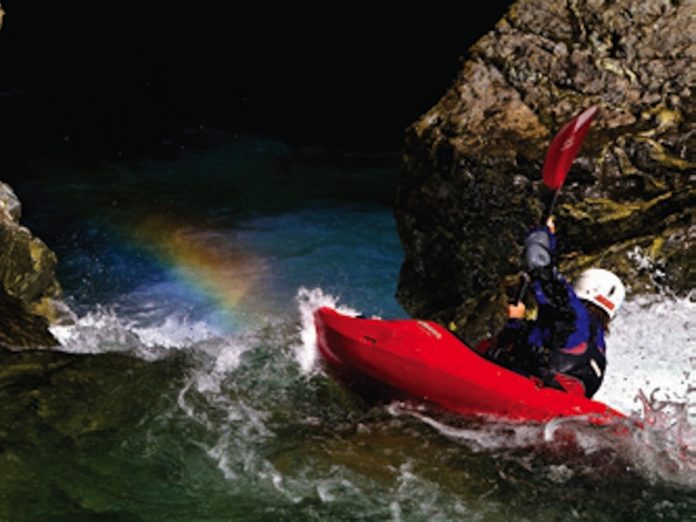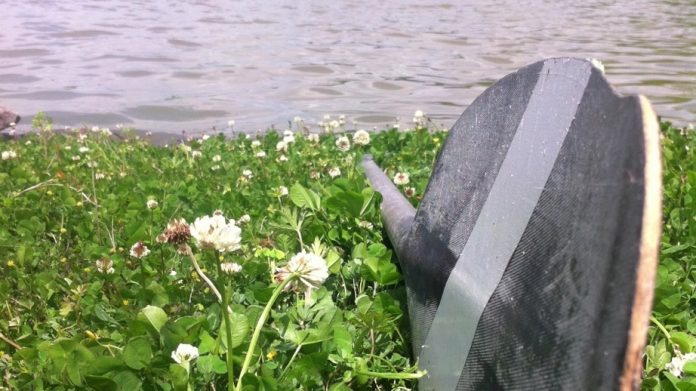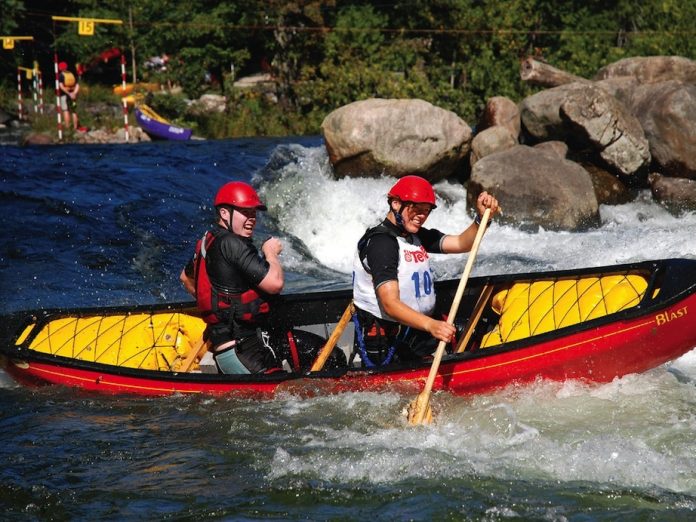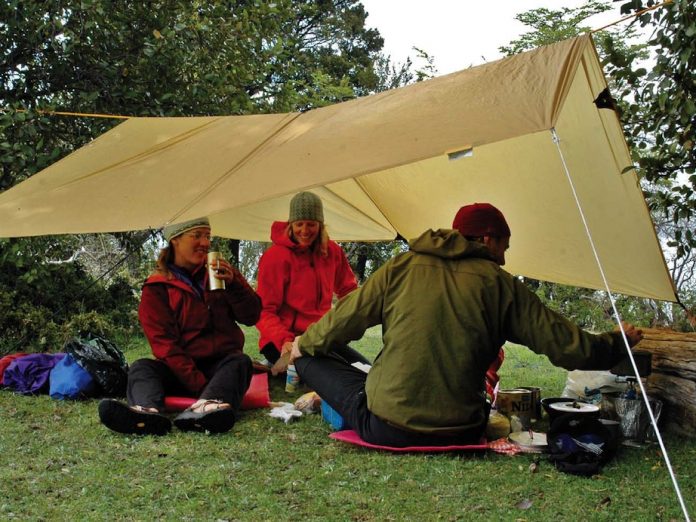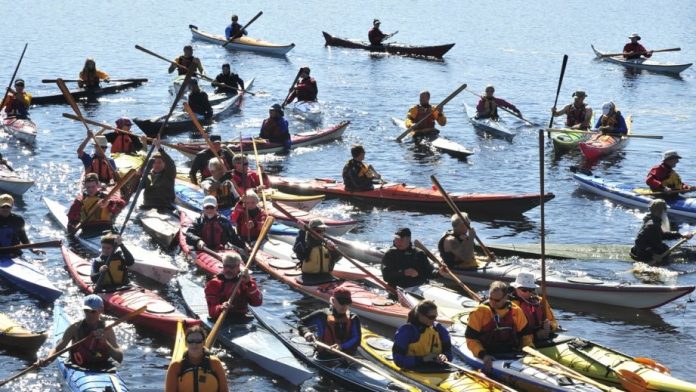This week in canoeing news: new issue of Canoeroots released, Survivorman hosts the Beaver Gala, LA River opened to paddlers and celebrate the Bonnechere River.
New Issue of Canoeroots Released
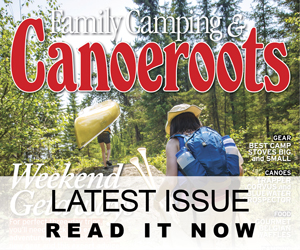 The new Early Summer 2013 issue of Canoeroots magazine is on newstands now and filled with the great paddling content you crave. If you’re not already getting Canoeroots in the mail you can subscribe for print editions and digital editions, download on your Apple or Android device or view online. Include 13 Awesome Canoe Trips of a Lifetime: Swim with dolphins, fly-in anywhere, follow Lewis and Clark, pan for gold, camp with gators, hug old-growth, trace the fur trade and much more awesomeness! Click here for more information.
The new Early Summer 2013 issue of Canoeroots magazine is on newstands now and filled with the great paddling content you crave. If you’re not already getting Canoeroots in the mail you can subscribe for print editions and digital editions, download on your Apple or Android device or view online. Include 13 Awesome Canoe Trips of a Lifetime: Swim with dolphins, fly-in anywhere, follow Lewis and Clark, pan for gold, camp with gators, hug old-growth, trace the fur trade and much more awesomeness! Click here for more information.
Survivor Man Hosts Beaver Gala
 Les Stroud will bring his celebrated speaking, storytelling and musical skills to The Canadian Canoe Museum’s iconic annual fundraising dinner. Already known to be a fabulous evening of fine food, good company and great auction items, this year’s gala is sure to be even more entertaining with Survivorman as the host. The 6th Annual Beaver Club Gala will take place on Saturday, October 19th at the Peterborough Golf & Country Club. Last year’s event sold out quickly, so email [email protected] today to reserve your table. Via www.canoemuseum.ca.
Les Stroud will bring his celebrated speaking, storytelling and musical skills to The Canadian Canoe Museum’s iconic annual fundraising dinner. Already known to be a fabulous evening of fine food, good company and great auction items, this year’s gala is sure to be even more entertaining with Survivorman as the host. The 6th Annual Beaver Club Gala will take place on Saturday, October 19th at the Peterborough Golf & Country Club. Last year’s event sold out quickly, so email [email protected] today to reserve your table. Via www.canoemuseum.ca.
LA River Now Open For Canoeing
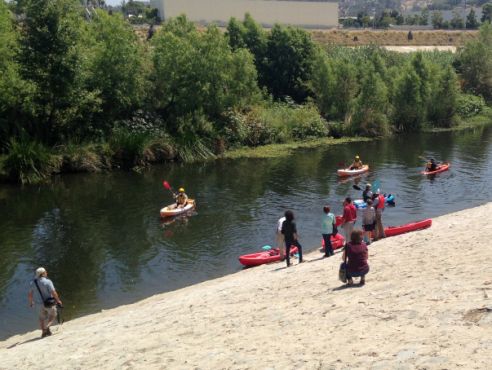 A 2.5-mile portion of the Los Angeles River near downtown L.A. is now open for walking, boating and fishing for the first time since the 1930s. This “pilot recreation zone,” which debuted on Monday with a ribbon-cutting ceremony at Marsh Park in Elysian Valley, will serve as a trial run for possible revitalization efforts along the waterway. The stretch of usable river begins at Fletcher Avenue and continues to Confluence Park, near where the 110 and 5 freeways intersect. The public can access the river for free but fishing will require a permit. Only non-motorized boats, such as kayaks, are allowed in the water. Via Blog Downtown. (Photo: Mary Plummer/KPCC)
A 2.5-mile portion of the Los Angeles River near downtown L.A. is now open for walking, boating and fishing for the first time since the 1930s. This “pilot recreation zone,” which debuted on Monday with a ribbon-cutting ceremony at Marsh Park in Elysian Valley, will serve as a trial run for possible revitalization efforts along the waterway. The stretch of usable river begins at Fletcher Avenue and continues to Confluence Park, near where the 110 and 5 freeways intersect. The public can access the river for free but fishing will require a permit. Only non-motorized boats, such as kayaks, are allowed in the water. Via Blog Downtown. (Photo: Mary Plummer/KPCC)
Bonnechere River Paddling Festivals
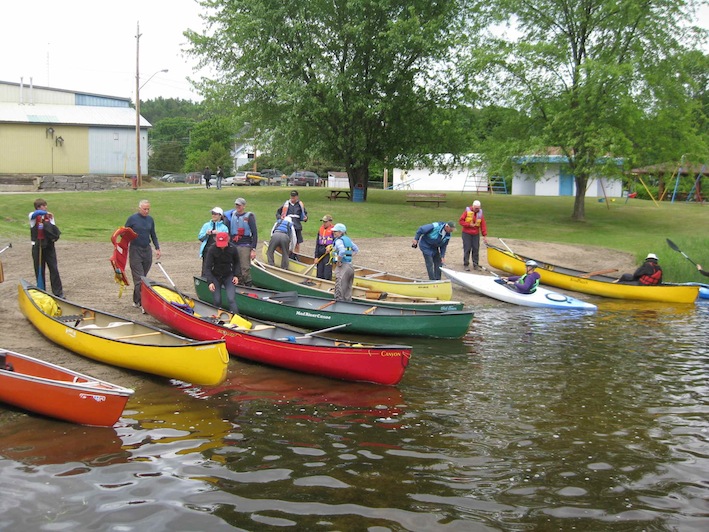 There are three group paddling excursions coming up! First one is on the Bonnechere River on June 1 from Wilber Lake to Eganville, as part of Celebrate Our River Day. Second one is on the Bonnechere as well on June 15 from Renfrew to Horton boat launch, the third is on the Madawaska River from Cherry Point Park to the Burnstown beach, on August 10th. Check out their events page for more information.
There are three group paddling excursions coming up! First one is on the Bonnechere River on June 1 from Wilber Lake to Eganville, as part of Celebrate Our River Day. Second one is on the Bonnechere as well on June 15 from Renfrew to Horton boat launch, the third is on the Madawaska River from Cherry Point Park to the Burnstown beach, on August 10th. Check out their events page for more information.



